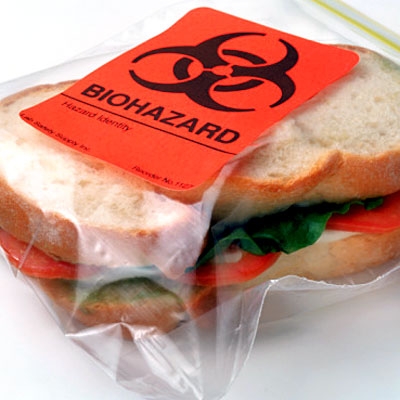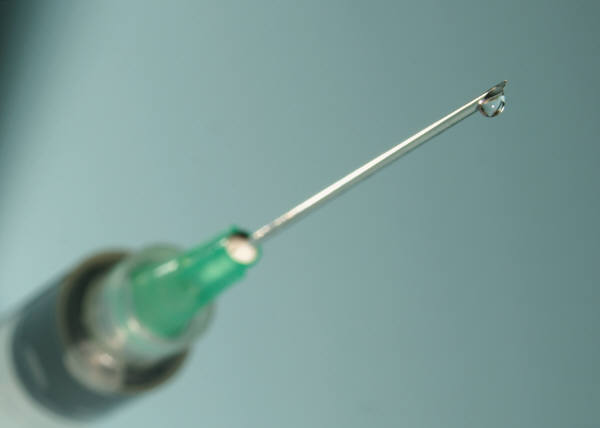Popular Supplement Found in Energy Drinks Could Help With Aging
June 21st, 2023
Taurine and Healthy Aging
Scientists report that supplementing with the nutrient may slow the aging process down in animals, leading to longer, healthier lives in animals and maybe humans too.
Research showed that taurine levels declined dramatically with age in mice, monkeys and humans. No one yet knows why. In experiments with mice and monkeys, researchers found that supplementing middle-aged animals led to better health.
In mice, the supplementation led to less weight gain, increased bone density, improved muscle endurance and strength, reduced insulin resistance, a better-functioning immune system, and a 10 percent longer lifespan.
In monkeys, supplementation prevented age-related weight gain, improved fasting blood sugar levels, increased bone density, and led to healthier lives, and improved immune system function.
Examining data from the University of Cambridges’ EPIC-Norfolk study, which from 1993 to 1998 tracked health, diet and physical activity of 30,000 men and women ages 40 to 79, the researchers found that, overall, people with higher taurine levels were healthier. They had lower levels of inflammation and were less likely to have Type 2 diabetes or high blood pressure or to be obese.
In another finding, the researchers discovered an association between the amount people exercise and their taurine levels. Researchers discovered that taurine levels rise with exercise.
What is Taurine?
Taurine is an essential amino acid that helps with things like your digestive, cardiovascular, skeletal, muscular, and nervous system functions.
While the human body can make small amounts of taurine, people mostly get it through food. Shellfish, dark chicken and turkey meat, contain the highest levels of taurine. Also, dairy products and seaweed.
What IAA has to Say
Insurance Administrator of America is here to keep you in the know about what is going on in the world of health. Remember, with IAA one call does it all.
FDA Warns Against Unapproved Skin Treatments
June 14th, 2023![]() The Food and Drug Administration (FDA) has warned the public against unapproved treatments for the skin condition molluscum.
The Food and Drug Administration (FDA) has warned the public against unapproved treatments for the skin condition molluscum.
No FDA Approval
Molluscum is a skin infection caused by a virus. The infection looks like white, pink or flesh-colored bumps.
Products marketed as treatments for molluscum have not been approved by the FDA.
Unapproved products are unlikely to have the impact they claim and may even cause bad reactions, such as skin reddening, abrasion from skin scratching and permanent scarring.
Prevent Molluscum
Molluscum are sometimes called water warts. They can grow alone or in groups almost anywhere on the skin, including the face, neck, arms, legs, abdomen, and genital area. Sometimes these bumps itch and get irritated.
Molluscum is spread by skin-to-skin contact. Staying clean, including washing your hands, is the best way to prevent them.
What IAA has to Say
Insurance Administrator of America wants you to be kept up to date in the world of health. Remember, with IAA one call does it all.
Sick Employees Major Contributor to Foodborne Illness
June 7th, 2023
New Report on Workers and Foodborne Illness
The report found that from 2017 to 2019, around 40 percent of foodborne illness outbreaks with known causes were at least partly associated with food contamination by a sick or infectious worker.
Norovirus, a stomach bug, was the most common pathogen involved in foodborne illness outbreaks at U.S. restaurants during the years studied, according to the report. It accounted for 47 percent of the 800 outbreaks that the CDC identified. Salmonella accounted for nearly 19 percent.
While most restaurants have at least some guidelines for sick workers, the report found that the policies are often incomplete.
The study was published in the CDC’s “Morbidity and Mortality Weekly Report.”
Food Safety
Make sure you are handling your family’s food safely:
- Clean: Wash your hands and surfaces often. Germs that can cause food poisoning can survive in many places and spread around your kitchen.
- Separate: Don’t cross contaminate.
- Cook to the right temperature: Food is safely cooked when the internal temperature gets high enough to kill the germs that can make you sick.
- Chill: Refrigerate promptly. Bacteria can multiply rapidly if left at room temperature or in the “danger zone” between 40°F and 140°F.
Foodborne diseases cause around 48 million illnesses and 3,000 deaths in the United States each year.
What IAA has to Say
Insurance Administrator of America wants you to have fun cooking for all those barbeques this summer, but make sure to keep the food safe! IAA is here to remind you that it is not just about what you eat, how it is prepared can also affect your health.
Advisory Committee Votes on New RSV Vaccine for Pregnant Women
May 31st, 2023 An independent advisory committee to the Food and Drug Administration (FDA) voted to recommend a shot that protects infants from respiratory syncytial virus (RSV) by vaccinating their mothers while pregnant.
An independent advisory committee to the Food and Drug Administration (FDA) voted to recommend a shot that protects infants from respiratory syncytial virus (RSV) by vaccinating their mothers while pregnant.
New RSV Vaccine
The 14-person panel unanimously recommended the shot based on its efficacy and voted 10-4 based on its safety.
If the shot is approved by the FDA, it would be the first vaccine that confers protection against RSV to babies.
RSV kills up to 300 children under five every year in the United States and up to 10,000 people aged 65 or older, according to the Centers for Disease Control and Prevention (CDC).
To protect infants, the shot would be given to pregnant people at 24 to 36 weeks gestation; the protective antibodies transfer through the placenta.
The committee members generally praised the vaccine’s efficacy, but shared reservations about the duration of protection and a potential risk of pre-term birth.
In a clinical trial with nearly 7,400 participants, the vaccine lowered the risk of severe disease from RSV among infants by 82 percent within roughly three months after birth. By around six months, efficacy was around 69 percent. Infants six months and younger are especially vulnerable to severe cases of RSV.
The shot also lowered the risk of developing respiratory disease from RSV that required doctors’ visits by 51 percent within six months. After that, however, the vaccine didn’t appear to make a big difference.
Signs of RSV
RSV causes infections of the lungs and respiratory tract.
RSV may not be severe when it starts. However, it can become more severe after a few days into the illness. Infants are most severely affected by RSV. Signs and symptoms of severe RSV infection in infants include:
- Cough
- Irritability
- Poor feeding
- Short, shallow and rapid breathing
- Struggling to breathe—chest muscles and skin pull inward with each breath
- Unusual tiredness
Each year in the U.S. an estimated 58,000—80,000 children younger than five years old are hospitalized due to RSV infection.
What IAA has to Say
Insurance Administrator of America wants you to be kept up to date in the world of health. Remember, with IAA one call does it all.
More Older Americans are Dying of Falls
May 24th, 2023 Older Americans are dying of falls at more than double the rate of 20 years ago, according to a new study.
Older Americans are dying of falls at more than double the rate of 20 years ago, according to a new study.
Falls in Older Americans
In 2020, the study found, just over 36,500 Americans aged 65 and up died of a fall-related injury. That was up from roughly 10,100 in 1999. Adjusted for age, these numbers translated into a more than twofold increase in the rate of fall-related deaths among older Americans: from 29 per 100,000 in 1999, to 69 per 100,000 in 2020.
According to the Centers for Disease Control and Prevention (CDC), about one-quarter of older Americans fall each year. Roughly 3 million end up in the emergency room, and more than 800,000 have to be hospitalized, most often for a head injury or broken hip.
That translates to about $50 billion per year in medical costs, the CDC estimates.
Make Your Home Safer
Older adults and families can take steps to make the home safer:
- Getting rid of small throw rugs and other trip and slip hazards
- Having handrails on both sides of staircases
- Installing grab bars in bathrooms
- Making sure the house is well-lit
For older people a broken bone can be the start of more serious health problems and can lead to long-term disability.
What IAA has to Say
Insurance Administrator of America wants older Americans to be safe. IAA encourages you to take a few simple steps to help avoid falls.
